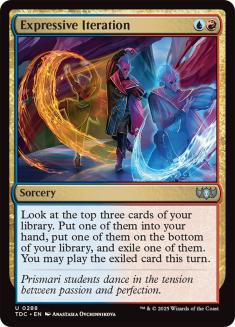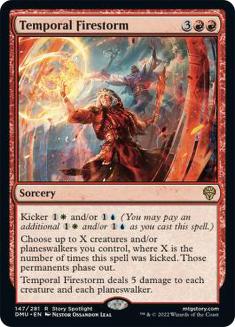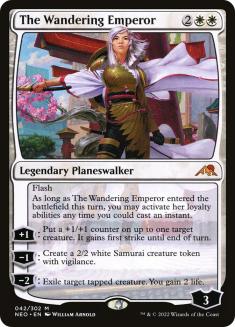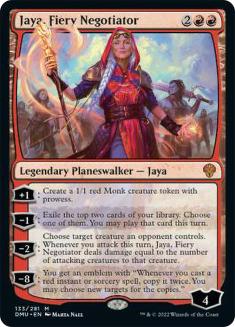The bombardment of new set after new set is daunting to some. Still, without a heavy focus on paper Standard recently, this influx of new cards has not been as financially taxing on competitive players as in past years. Even with fewer sets being printed then, it took some financial fortitude to stay up-to-date in those Standard formats.
I find myself picking up playsets of cards that may have usage in Pioneer and/or Modern. This is partially due to the stagnation and abandonment of Standard. With the set rotation rapidly approaching, it may be time to prepare for the highly anticipated return of Magic’s formerly championed format.
The Need for a Healthy Standard
Standard perfectly bridged the gap between competitive and casual Magic. It was played universally across local game stores, at competitive events, and inadvertently on some kitchen tables. The upcoming rotation is priming Standard for a triumphant return, with the full return of in-store play and a paper Pro Tour.
This Pro Tour has been announced as Pioneer; however, I remain confident that Wizards of the Coast (WotC) will not squander this opportunity to resurrect the almighty Standard with a stroke of a pen. I am not oblivious to the fact that Commander has completely routed the casual department of sales, and that is perfectly fine. This game is owned by a large corporation that has profit as its main driving force. Just because they found abundant success in Commander does not mean they will avoid this easy sales boost. Standard has always sold boxes and will continue to do so, given the opportunity.
More players have joined the game over the last few years. Sales have shown that, and Magic continues to exponentially grow. Restoring Standard will only bolster those already stellar numbers, while giving casual and competitive players a return to normalcy.
It feels weird to only play Modern events at my local game store, and I am fully aware of the financial barrier that brings. There is a consistent group that attends every week. This group had the pockets to invest and continue to modernize their decks with relative ease. This setup gatekeeps most new players who want to play in their first Friday Night Magic, as they do not have the resources to join. When the format was Standard, any willing player could scrape up enough playables to enter the queue. With Modern, that is not the case.
An Expressive Exit
The exit of Expressive Iteration, and many of the problematic cards between bannings, will create a new Standard opportunity for all of us. I am confident that WotC will announce Standard as the next Pro Tour format, as well as fully support the format on their online platforms. From a financial and strategic standpoint, it makes perfect sense. It is also the correct decision for the betterment of the game, which is why I am personally advocating and predicting this outcome.
I have already gone into detail on how certain cards leaving will affect a new format and how control is only moderately affected. There will always be card draw, disruption, and sweet finishers. The only variable is how strong these look-fors will be when staples rotate out. With the first few Dominaria United previews released, I can confidently say we are in for a treat.
My color of choice is blue, with a slight dab of white and/or black. This is no secret to anyone reading my work; however, I often betray the Esper/Azorius/Dimir family for a touch of red when great previews arrive. One of the Pro Tours I qualified for was with Grixis Control in Standard, which featured Torrential Gearhulk and some powerful red and black disruption. I always look for a reason to stay true to my roots, but there are certain cards that effectively pull me away. With Dominaria United, the first two cards I am looking at have already piqued my control brewing interest.
Temporal Firestorm
Temporal Firestorm has the kicker ability, which is one of my all-time favorites. Strong control cards that have kicker upside can make a deck competitive by themselves. Temporal Firestorm is already a sweeper, for creatures and planeswalkers, on Turn 5 without any assistance. Five damage to these permanents generally is lights-out for any threat and is a great replacement for the exiting Doomskar. There are other great sweepers that remain in Standard, but this may be the best one of the bunch. The fact that it hits planeswalkers is huge, especially for control decks that typically lose when opposing planeswalkers resolve. The downside is that your planeswalkers (and creatures to a lesser extent) fall victim to this spell.
This is where the kicker comes in, to easily remedy that scenario. For as many times as you pay the blue or white kicker of Temporal Firestorm, you save that number of creatures and/or planeswalkers you control. It phases out those choices, making them safe from the fire that rains down immediately after.
The Wandering Emperor Factor
The Wandering Emperor is a must-play in any white-based control deck. Temporal Firestorm fits perfectly into a Jeskai Control build and has a kicker cost payable with either white or blue mana. That versatility is great, giving control deckbuilders an option to stick to two colors. With manabase uncertainty, this option keeps doors open for those who want to play this in Standard. I believe that a three-color control deck will be possible, but there is a chance that the consistency of two colors wins this contest.
Most of the five-cost red sweepers have seen extensive play in Standard. I often find myself joining the other side, dropping a Burn Down the House or Hour of Devastation on my unsuspecting opponents. Control decks in Standard must have a good sweeper to remain competitive, since the format is typically dominated by a fairer population of creatures. Both Burn Down the House and Hour of Devastation wreaked havoc against more than just creatures. Giving control the ability to dispatch planeswalkers is an upgrade to what we are used to having in the sweeper department. This one-card, clean answer is exactly the type of card I look for when building an effective control deck to take on the Standard metagame.
Jaya, Fiery Negotiator
Joining this spectacular sweeper in Dominaria United is Jaya, Fiery Negotiator. This is one of my favorite preview cards in recent memory, as all its abilities are compatible with the control gameplan. With the first preview card landing right on the control bench, I am less disappointed by this card’s color. Both Jaya and Temporal Firestorm are potential control cards and warrant exploration.
First Ability
The first ability on Jaya is the most important one, especially for a four-mana investment. Jaya’s first ability increases its loyalty and produces a 1/1 Monk creature with prowess. This produces that Elspeth, Knight-Errant feeling in me and helps mask the color of the card. Producing a 1/1 creature on Turn 4 to protect it is a huge benefit. The added prowess on this token assists the control user in becoming the aggressor, attacking back for a nice chunk of damage with little investment.
Elspeth did a similar play with its other ability; however, Jaya does not need to waste an activation to increase its creature’s power and toughness. Control decks inherently have a pile of noncreature spells to take full advantage of creatures with prowess. Producing threats, and defending upon arrival, is the first requisite of a strong planeswalker in Standard.
Second Ability
The second ability on Jaya produces card advantage for the user. This is not a Jace, the Mind Sculptor Brainstorm, but it is a strong ability for Standard. Hitting land drops is the name of the game for control decks in any format. To hit land number five, this Jaya ability provides great support to get there.
Building a Standard control deck with this ability in mind looks different from past versions. Since the card must be played the turn it’s revealed, registering too many counterspells would be detrimental. Luckily for us, counterspells are pretty bad these days and many will not make the cut. I have never been a big Cancel guy, so expect my Izzet/Jeskai Control decks to have minimal blue interaction on the stack. Nobody needs to twist my arm for me to play more tap-out control, and Jaya nudges me in that direction.
Third Ability
The third ability on Jaya is the least effective so far, but gains strength with each turn. If Jaya is left unchecked, it can use this ability to take out a defending creature with modest toughness. It will be rare for a control deck of mine to attack with numerous creatures, unless they are tokens produced by strong planeswalkers.
There are many more cards still to come. The possibility of additional control staples, with attached creature production, is there. Kicker opens the door for this type of card design. If more support comes to us for Jaya’s removal mode, then watch out, aggro players. This planeswalker starts at five loyalty after its first produced token, making it difficult to burn down as is. After further considering the card advantage and potential removal, it is unlikely I pilot a control deck without it to start off the new Standard.
Ultimate
The final ability on Jaya is an ultimate that I do not see myself using. I have little interest in copying a red instant or sorcery spell a couple of times, unless there are some wild upcoming targets in Dominaria United. Even if the ultimate covered blue spells, it is not as strong as ultimates of its past competitors. To get to this final ability, Jaya must create a token for four turns straight and take no damage. The control play pattern that this card will enhance involves creating creatures and drawing cards, which the first two abilities do perfectly. I am hopeful for the third ability being relevant and dismissive of the ultimate.
With all that considered, Jaya and Temporal Firestorm are a couple of red cards that have Inception-ed thoughts of betrayal in my head. If Dominaria United hands out additional red control cards, I will be an Izzet/Jeskai Control user when the new Standard launches.






